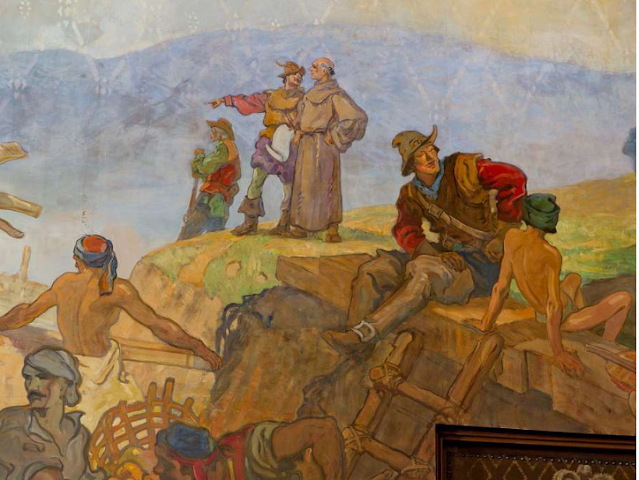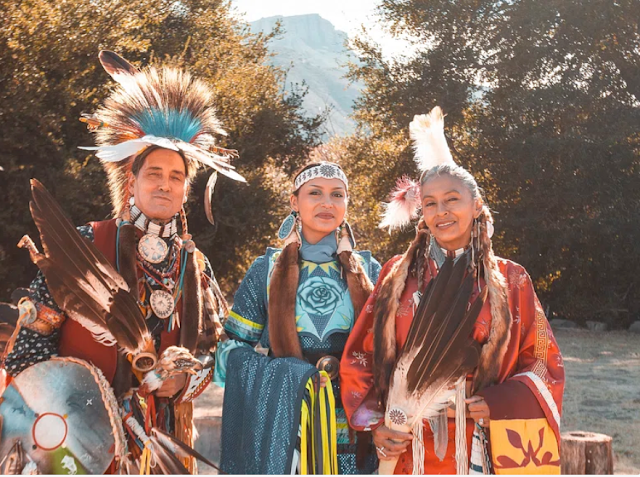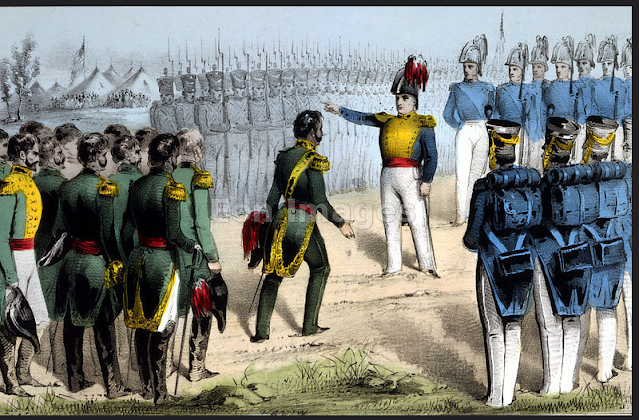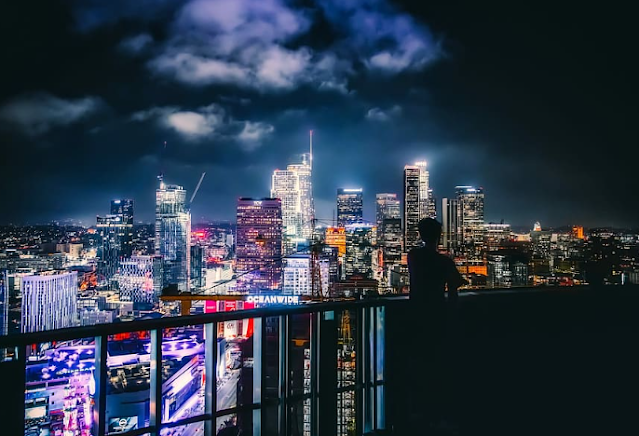Los Angeles: A Global Metropolis with a Colorful Legacy
Los Angeles is a city in the United States that serves as the cultural, financial, and commercial hub of Southern California. It boasts an estimated population of 3.98 million, making it the second most populous city in the United States and the most populous in the state of California.
The region that eventually developed into Los Angeles was originally inhabited by the indigenous Tongva people. In 1542, Portuguese explorer Juan Rodríguez Cabrillo is said to have been the first European explorer to sail up the California coast and claim the land for the Spanish Empire. Under the governance of Spanish governor Felipe de Neve, the city of Los Angeles was established on September 4, 1781, upon the village of Yaanga.
This article proves the rich history of Los Angeles, tracing its evolution from a humble Spanish pueblo to a global city of immense cultural, economic, and social significance.
💻 Table of Contents:
- The Spanish Colonial Era (1769-1821)
- Mexican Rule (1821–1846)
- The Mexican-American War and American Incorporation
- The Real Estate Boom and the Rise of Hollywood
- Los Angeles Today: A Global Metropolis
 |
| Image Source: Google, Image By: Picryl |
The Spanish Colonial Era (1769-1821):
Before Spain arrived in California in 1769, approximately 300,000 indigenous people inhabited the region, creating a highly diverse population. Spain employed missions, presidios, and pueblos to assert control over both the land and its inhabitants. Unlike the British, the Spanish relied on Native Americans for labor and to help their communities grow. Their aim was to convert the indigenous people to their religion and way of life.
The history of Los Angeles began on September 4, 1781, when 44 settlers from central New Spain (modern-day Mexico) established a permanent settlement in what is now Downtown Los Angeles, following the orders of Spanish Governor of Las Californias, Felipe de Neve, and with the authorization of Viceroy Antonio María de Bucareli.
 |
| Image Source: Google, Image By: Rawpixel |
The town that was founded by the colonizers had a long Spanish name: "El Pueblo de Nuestra Señora la Reina de los Ángeles," which means "The Town of Our Lady, the Queen of the Angels."
California was formerly a part of a region known as New Spain until 1821. Afterward, it became a part of Mexico. However, during a war between Mexico and the United States from 1846 to 1848, California was ceded to the United States as part of the Treaty of Guadalupe Hidalgo in 1848. Consequently, California transitioned from Spanish control to Mexican sovereignty and ultimately became a part of the United States.
During the era of Spanish colonization (1769-1821), Los Angeles functioned as an agricultural hub, primarily focused on providing nearby military forts and missions with essential food and resources. Settlers cultivated crops, raised livestock, and engaged in trade with neighboring communities, laying the groundwork for the city's agricultural heritage, which played a significant role in its early development.
Mexican Rule (1821–1846):
In 1810, increasing unhappiness with the government in the southern regions of New Spain turned into violent unrest. The conflict escalated over the subsequent decade. Mexico achieved independence from Spain on 24th August 1821, following the protracted Mexican War of Independence. After the Mexico's Independence, it became a Mexican territory in April 1822 and was renamed Alta California in 1824. However, in 1848, as the Mexican–American War came to an end, Los Angeles and the rest of California were acquired by the United States through the Treaty of Guadalupe Hidalgo.
 |
| Image Source: Google, Image By: Flickr |
You May Also Like:
A new way of life emerged, centered on the marketing of cattle and the sale of their hides. Ranchers (individuals who own or manage large farms) in California relied on goods brought by foreign traders. During this era, land grants were conferred upon prominent Mexican citizens, giving rise to extensive ranchos. An increasing number of people from outside Mexico began migrating to California, particularly from the United States. California had its own local government, and by 1846, it had a diverse population hailing from various regions, including a significant influx of immigrants from the United States.
The Mexican-American War and American Incorporation:
On April 25, 1846, Mexican soldiers launched an attack against a group of U.S. soldiers under the command of General Zachary Taylor near a disputed territory. They killed around a dozen U.S. soldiers and then surrounded Fort Texas by the Rio Grande River. This happened because Mexico didn't want to accept that Texas was its own country, Texans wanted to become part of the United States, and Americans wanted to expand westward.
For many years, Mexico didn't govern California very well, and the people there were unhappy with Mexican rule. President James K. Polk tried to buy California from Mexico, but they said no. In July 1845, President Polk ordered American troops to go west of the Nueces River.
The Mexican-American War (1846-1848) was primarily caused by a combination of factors. These included Mexico's refusal to recognize Texas as independent following its declaration of independence from Mexico on March 2, 1836 and Texas's subsequent desire to join the United States. Additionally, tensions were fueled by the annexation aspirations of Americans who sought to expand the territory of the United States. The dispute over the border between Mexico and the newly annexed Texas exacerbated these tensions. Furthermore, the overarching ideology of Manifest Destiny, which promoted the belief in the inherent right of the United States to expand westward, played a significant role in driving the conflict.
 |
| Image Source: Google, Image By: Wallpaperflare |
The Treaty of Guadalupe Hidalgo was signed on February 2, 1848, and it ended the war between the United States and Mexico. According to the treaty, Mexico had to give up 55% of its land, which included places like California, Nevada, Utah, New Mexico, most of Arizona and Colorado, and parts of Oklahoma, Kansas, and Wyoming. Mexico also had to agree that Texas belonged to the United States and that the Rio Grande River was the southern border.
When the United States took over, Los Angeles changed a lot. In 1850, California became the 31st state of the United States, and Los Angeles officially became a city. In the 1870s, the Southern Pacific Railroad came to Los Angeles, connecting it to the rest of the country. This made it easier to move things and people around and helped the economy grow.
The Real Estate Boom and the Rise of Hollywood:
In the late 1800s and early 1900s, a lot of people wanted to move to Los Angeles because the weather was great, and there was good land for farming. People from the East and Midwest came to escape cold winters, and this made the city grow really fast. It spread out a lot during this time.
Around this period, Hollywood got its start, and it's now famous for making movies and entertainment. In 1887, a couple named Harvey and Daeida Wilcox bought some land there, hoping to create a peaceful community. But soon, filmmakers liked it because of the sunny weather, so Hollywood became the center of the American film industry. Big studios like Paramount, Warner Bros., and Universal set up their businesses there.
During the 1920s and 1930s, movies had a special time. Famous actors like Charlie Chaplin, Buster Keaton, and Mary Pickford became Hollywood stars. The entertainment business kept growing, and Los Angeles became known as the world's entertainment capital.
Los Angeles Today: A Global Metropolis
Today, Los Angeles represents as a global metropolis, famous for its diversity, creativity, and monetary significance. In Los Angeles, there are many different kinds of jobs, like making movies, working in technology, taking care of people's health, and building things that fly in the sky.
Los Angeles also has really busy ports, like the Port of Los Angeles and the Port of Long Beach. These ports help with trading things between countries and are some of the busiest in the world.
Conclusion:
Los Angeles, which people often call the "City of Angels," has a really interesting past. The beautiful beaches of Los Angeles spread along a 75-mile coastline, starting from Long Beach and going up to Malibu. This is one of the many reasons why people like it so much. Los Angeles is the second biggest city in the United States, just after New York.
When the United States took over, Los Angeles grew a lot. They built railroads, and Hollywood became famous worldwide for entertainment.
Today, Los Angeles is a huge, diverse city. It's known for entertainment, technology, and trade. It's a place where people can chase their dreams and make them come true.





